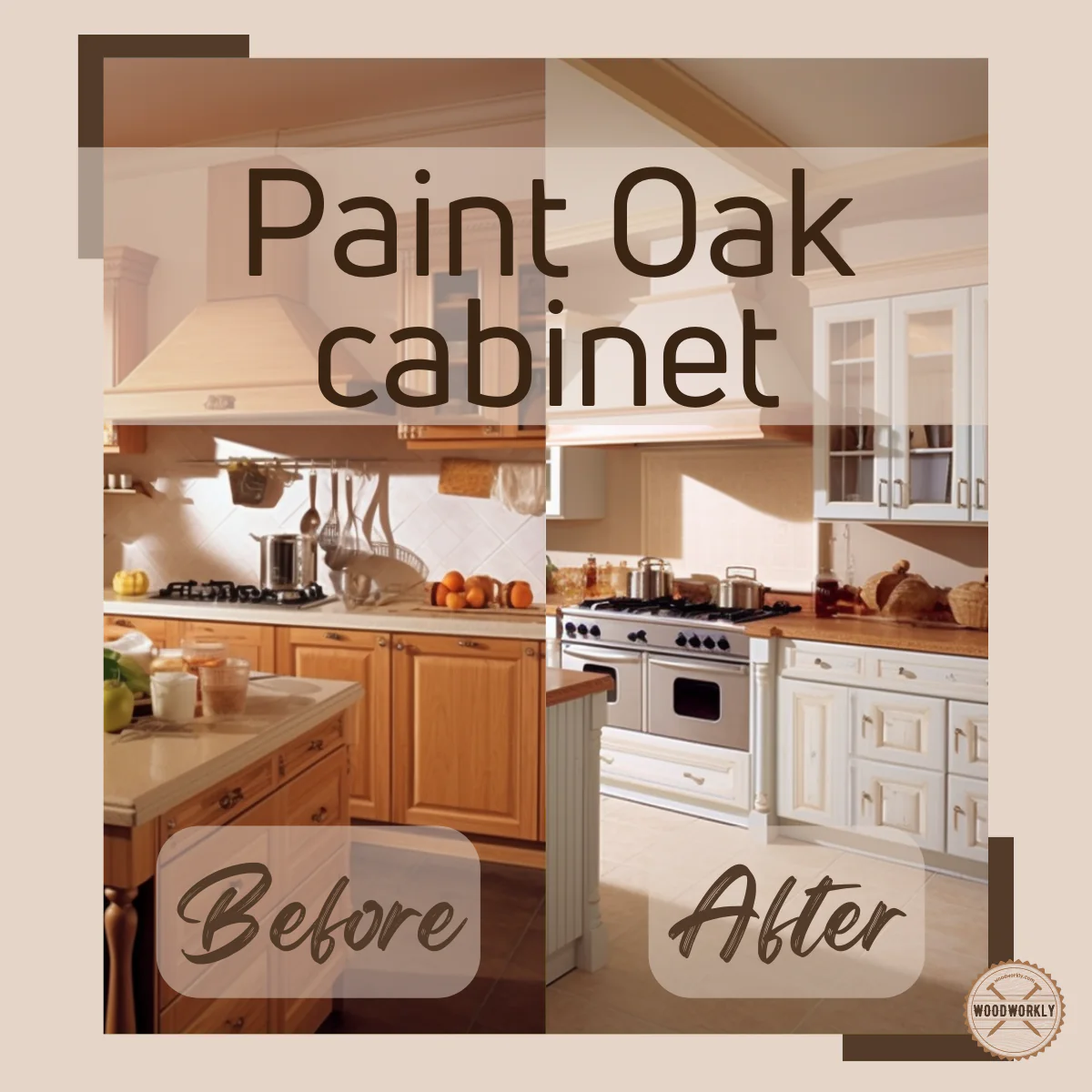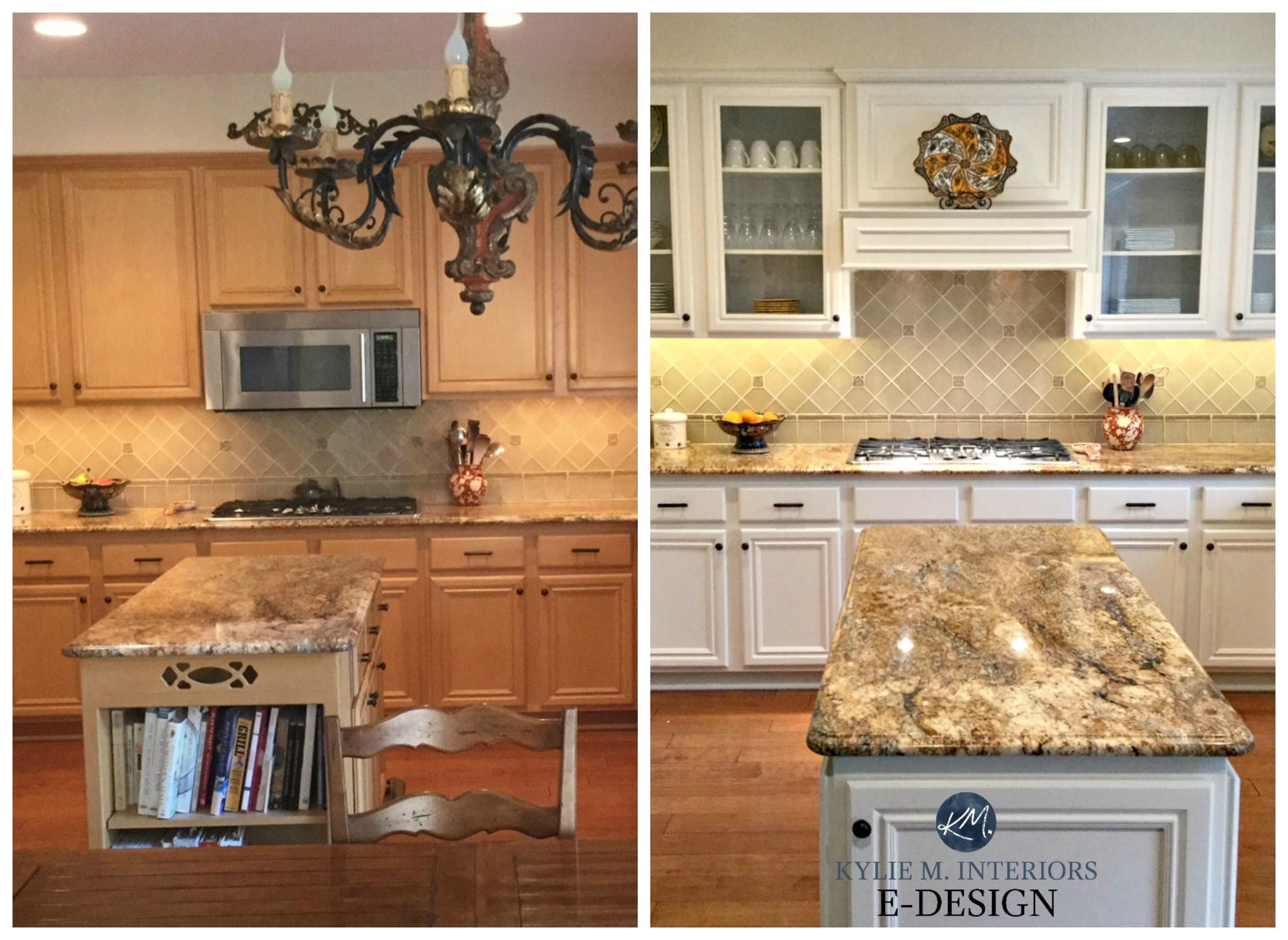Chalk Paint Cabinet Transformations

Chalk paint is a popular choice for transforming cabinets because it’s easy to use, provides a durable finish, and offers endless possibilities for customization. It’s perfect for creating a fresh, updated look without the hassle and expense of replacing your cabinets entirely.
Before and After Images with Descriptions
The following examples showcase the dramatic transformations that chalk paint can achieve on cabinets.
- Image 1: Dated Oak Cabinets to Chic White Kitchen
* Before: The kitchen features dated oak cabinets with a honey-colored stain and brass hardware. The overall aesthetic is warm but lacks modern appeal.
* After: The cabinets have been painted a crisp white, creating a clean and contemporary look. The brass hardware has been replaced with sleek nickel pulls. The transformation instantly brightens the kitchen and makes it feel more spacious.
* Process: The cabinets were cleaned and lightly sanded to create a smooth surface. They were then painted with two coats of white chalk paint, allowing each coat to dry completely before applying the next. The hardware was replaced with new nickel pulls.
* Impact: The white paint and new hardware create a more modern and sophisticated look for the kitchen. The white color also helps to reflect light, making the space feel brighter and larger. - Image 2: Worn Cherry Cabinets to Rustic Farmhouse Style
* Before: The kitchen features cherry cabinets with a dark, glossy finish. The cabinets show signs of wear and tear, with scratches and dents.
* After: The cabinets have been painted a soft, warm gray, giving them a rustic farmhouse feel. The hardware has been replaced with antique-style knobs.
* Process: The cabinets were cleaned and lightly sanded to create a smooth surface. They were then painted with two coats of gray chalk paint, allowing each coat to dry completely before applying the next. The hardware was replaced with new antique-style knobs. The gray paint was distressed to create a more aged and worn look, enhancing the farmhouse aesthetic.
* Impact: The gray paint and new hardware create a rustic and charming look for the kitchen. The distressed finish adds character and warmth to the space. - Image 3: Plain White Cabinets to Bold Blue Statement
* Before: The kitchen features plain white cabinets with simple hardware. The overall aesthetic is clean but lacks personality.
* After: The cabinets have been painted a bold, vibrant blue, creating a dramatic and eye-catching focal point in the kitchen. The hardware has been replaced with brushed nickel pulls for a touch of contrast.
* Process: The cabinets were cleaned and lightly sanded to create a smooth surface. They were then painted with two coats of blue chalk paint, allowing each coat to dry completely before applying the next. The hardware was replaced with new brushed nickel pulls.
* Impact: The blue paint adds a bold and vibrant touch to the kitchen, making it feel more stylish and modern. The blue color creates a striking contrast against the white walls and countertops.
Cabinet Transformation Comparison Table
The following table compares the “before” and “after” characteristics of the cabinets, illustrating the impact of chalk paint transformations:
| Feature | Before | After | ————— | ——————————————– | ———————————————— | Style | Dated, traditional | Modern, contemporary, farmhouse, or bold statement | Color | Oak, cherry, or plain white | White, gray, blue, or any desired color | Hardware | Brass, simple, or worn | Nickel, antique, or brushed nickel | Overall Appeal | Warm but dated, worn, or plain | Bright, modern, rustic, or bold and stylish |
|---|
Creative Techniques for Chalk Paint Cabinets: Chalk Paint Cabinets Before And After

Chalk paint offers a versatile and forgiving medium for transforming cabinets, allowing you to achieve a wide range of styles from classic to modern. With a little creativity, you can create unique and personalized pieces that reflect your individual taste.
Applying Chalk Paint to Cabinets
Applying chalk paint to cabinets is a relatively straightforward process, but there are some key steps and tips to ensure a smooth and even finish.
- Prepare the Surface: Start by cleaning the cabinets thoroughly with a degreaser to remove any dirt, grease, or grime. Sand lightly with fine-grit sandpaper to create a slightly rough surface that will help the chalk paint adhere better.
- Prime (Optional): Priming is not always necessary with chalk paint, but it can be beneficial, especially on glossy surfaces. A primer will help create a uniform surface and prevent the paint from soaking into the wood, resulting in a smoother finish.
- Apply Chalk Paint: Use a high-quality brush or roller to apply the chalk paint in thin, even coats. Allow each coat to dry completely before applying the next. Two to three coats are usually sufficient for full coverage.
- Distress (Optional): Distressing is a popular technique for creating a vintage or rustic look on chalk paint cabinets. Use sandpaper, a wire brush, or a sanding block to lightly sand away some of the paint in areas that would naturally wear over time, such as edges, corners, and high-traffic areas.
- Seal: Once the chalk paint is dry, seal it with a clear wax or sealant to protect the finish and prevent it from chipping or scratching. Apply the wax or sealant in thin, even coats, allowing each coat to dry completely before applying the next.
Distressing Techniques
Distressing is a popular technique for creating a vintage or rustic look on chalk paint cabinets. There are various methods for distressing chalk paint, each yielding a unique effect.
- Sanding: Use fine-grit sandpaper to gently sand away some of the paint in areas that would naturally wear over time, such as edges, corners, and high-traffic areas. Start with light sanding and gradually increase the pressure as needed.
- Wire Brushing: A wire brush can be used to create a more pronounced distressed look. Use a stiff-bristled wire brush to brush across the surface of the paint, removing some of the paint and creating a textured finish.
- Sandpaper and Wax: This technique combines sanding with wax to create a more subtle distressed look. Apply a thin layer of wax to the surface of the paint, then use sandpaper to gently rub away some of the wax, revealing the paint underneath.
Unique Finishes with Chalk Paint
Chalk paint offers a wide range of possibilities for creating unique finishes on cabinets.
- Layering: Layering different colors of chalk paint can create depth and dimension. Start with a base coat, then apply a second color over top, allowing some of the base color to show through. You can also use a dry brush technique to create a subtle layered effect.
- Waxing: Waxing can enhance the natural beauty of chalk paint and create a protective finish. Use a clear wax to seal the paint and protect it from scratches and stains. You can also use colored waxes to add a subtle hint of color or to highlight certain areas of the cabinet.
- Metallic Accents: Metallic accents can add a touch of glamour and sophistication to chalk paint cabinets. Use metallic paint, leaf, or wax to highlight details, such as the edges of the cabinet doors or the hardware.
Incorporating Stencils, Patterns, and Hardware, Chalk paint cabinets before and after
Personalize your chalk paint cabinets by incorporating stencils, patterns, and decorative hardware.
- Stencils: Stencils offer an easy way to add intricate designs to chalk paint cabinets. Choose a stencil that complements the style of your cabinet and use a stencil brush to apply the paint.
- Patterns: Create unique patterns on your cabinets by using painter’s tape to create geometric shapes or stripes. You can also use freehand techniques to paint patterns or designs.
- Decorative Hardware: Replace the existing hardware on your cabinets with decorative knobs or pulls to add a touch of personality. Choose hardware that complements the style of your cabinet and your overall decor.
Chalk paint cabinets before and after – The transformation of those tired cabinets, a stark before-and-after, is like the magic of creating a whimsical space for a little girl. The walls, once blank, become a canvas of dreams with little girls bedroom wallpaper that transports her to a world of fairies and princesses.
Just as the cabinets reveal their new life with a coat of chalk paint, so too does the room, once mundane, blossom into a haven of imagination.
The transformation of tired cabinets with a coat of chalk paint is truly remarkable, but achieving a polished look requires more than just color. A perfect hinge placement is crucial for smooth operation and a professional finish. This is where a cabinet door hinge template becomes your secret weapon, ensuring those doors swing open with grace and precision, completing the chalk paint magic.
